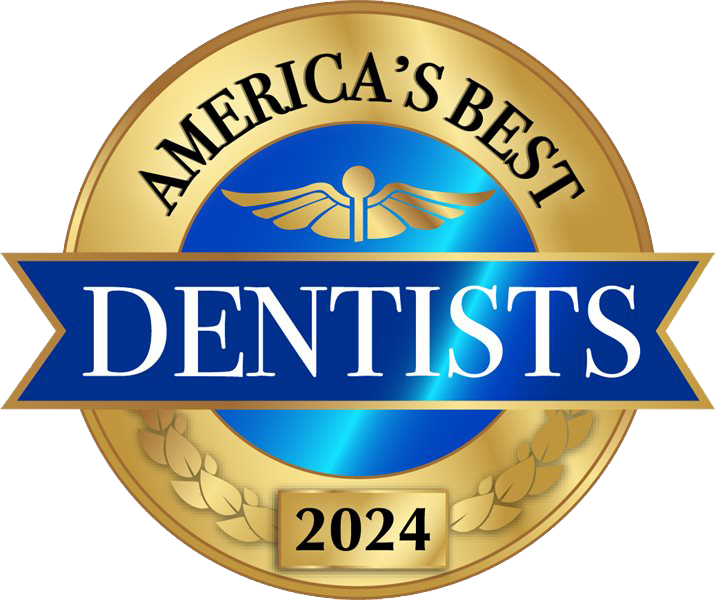Blog Layout
Treatment For Tooth Discoloration In Toddlers
Cherrywood Dental • Feb 24, 2020
Tooth discoloration is said to happen if the color and appearance of the primary teeth change from anything but a bright shade of white. Just because your child’s teeth are going to fall out eventually doesn’t mean you should ever overlook any dental hygiene issues. If ignored, dental problems can bring about lifelong consequences.
Here are simple ways to treat tooth discoloration in toddlers, and what the discoloration may be trying to tell you.
What Tooth Discoloration Is Trying To Tell You
Tooth discoloration can be classified into two different categories:
External Discoloration
Caused when food, beverages, or medications get absorbed into the tooth film, external discoloration is a protein film that forms on the surface of tooth enamel. These types of surface stains can typically be removed by brushing the teeth with a small amount of whitening toothpaste, which contains more scrubbing power than children’s toothpaste. A paste made of baking soda and water is also useful in removing plaque buildup that has been stained with food debris.
Internal Discoloration
Internal discoloration can occur either directly or indirectly due to several internal factors that are affecting the overall health of a child. Dentine defects, enamel hypoplasia, metabolic disorder, systemic syndrome, and other health factors can all cause tooth discoloration. Stains caused by internal factors are not easily removed by brushing alone.
Common Factors To Consider
If your toddler’s teeth appear yellow or dull in color, it’s most likely due to the teeth not being cleaned thoroughly, resulting in a buildup of plaque. The most common causes of tooth discoloration in toddlers are:
Insufficient Brushing
Not brushing a child’s teeth adequately will result in plaque formation. Plaque forms as a result of bacterial action on food debris, which can lead to discoloration in teeth. Your child’s teeth should be brushed every day, twice per day, as soon as their first tooth erupts. Babies and young children can get cavities too, just like adults, so always check your child’s teeth for signs of enamel erosion.
Dental Decay
Dental caries, or cavities, are caused due to the activity of bacteria that feeds off food debris that is not properly cleaned off the surfaces of the teeth. Discoloration due to dental decay ranges from yellow to black as a result of inadequate brushing.
Fluorosis
White patches or streaks on the teeth can be a common sign of fluorosis. Fluorosis is caused when there is too much fluoride in a child’s mouth either due to:
- A child’s drinking water contains excessive amounts of fluoride
- The toothpaste a child is using contains too much fluoride for their age
At-Home Treatment Options
Treatment of tooth discoloration in toddlers relies on the reasons behind the issue. If the cause is due to external factors, such as food debris and beverages that are dark in color and staining the tooth enamel, standard tooth color can be regained by:
Better Brushing – Brushing a toddler’s teeth with an adult toothbrush and a small amount of adult toothpaste can alleviate stubborn stains. Always brush softly as hard brushing can damage gum tissue.
Baking Soda and Water
– A paste of baking soda and water can be used to brush away surface stains.
Monitoring
– Always watch for the accumulation of stains on the surface of a child’s teeth to help prevent plaque buildup and avoid future cavities.
In-Office Treatments
Bleaching
– Certain bleaching methods can be used by a dentist to remove stubborn stains for both children and adults.
Pumice Mixture
– Used by a dentist, this method removes the stain and bacteria from the teeth. Pumice powder is exclusively formulated to use on teeth and is far different from a pumice stone. Never attempt to clean teeth with any type of pumice yourself.
Prevention Is Key
Teeth discoloration that occurs due to internal factors cannot be prevented but can be treated, and the normal color of the teeth can be regained. On the other hand, tooth discoloration due to external factors can be entirely prevented with proper cleaning habits and routine visits to your child’s dentist. If you are concerned over tooth discoloration in your toddler’s smile, call Cherrywood Dental Associates today!
© 2024
All Rights Reserved | Cherrywood Dental Associates
781-469-0771
301-973-6160
Website designed and maintained by Xpress, INC

